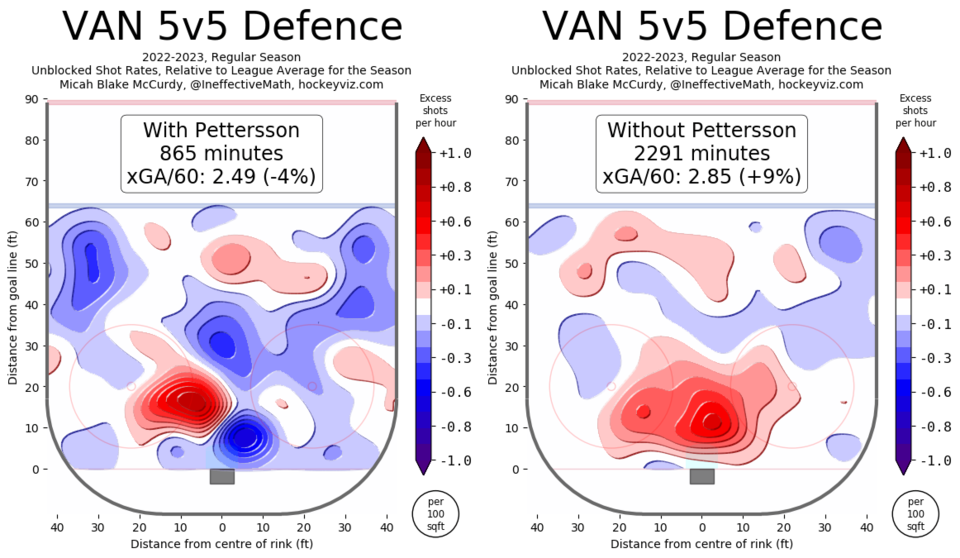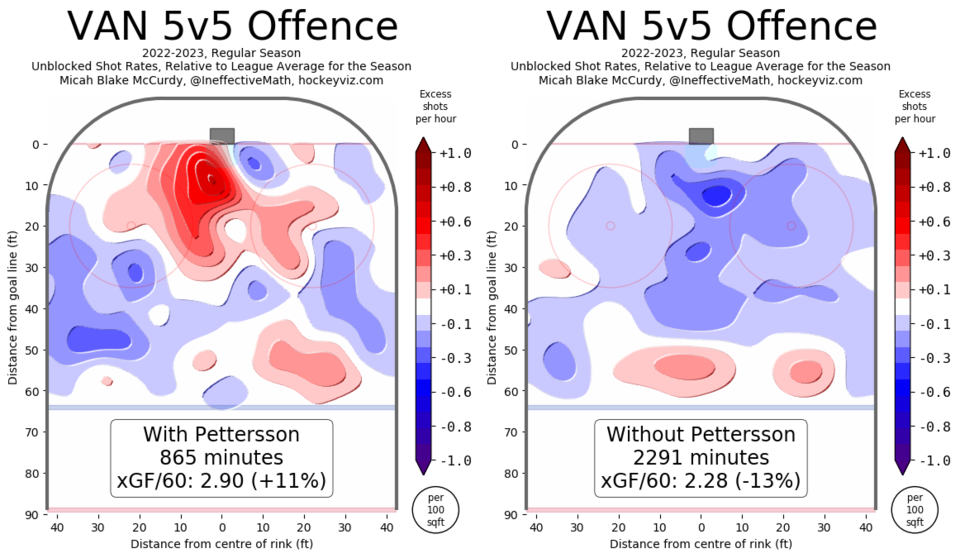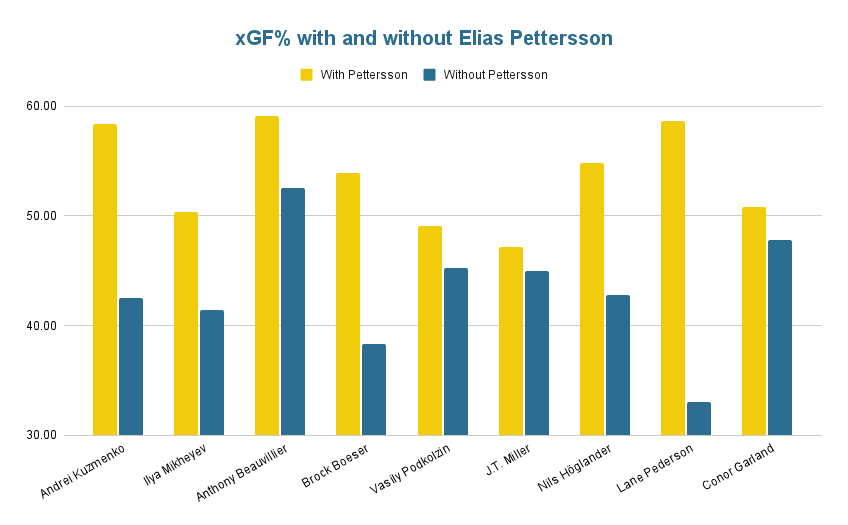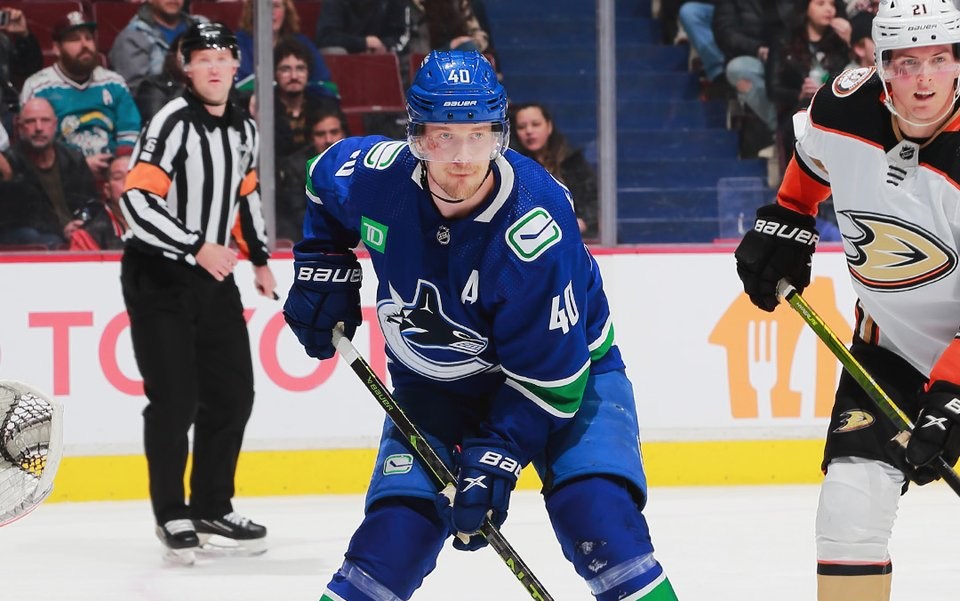In case you’ve been living under a rock, Elias Pettersson is having a phenomenal season.
The 24-year-old centre is top ten in the NHL in scoring with 82 points and has also cracked the 30-goal barrier for the second time in his career. He’s on pace for 38 goals and 104 points, which would be the highest-scoring season for a Canuck in over a decade since Daniel Sedin also put up 104 points in the 2010-11 season.
That’s all while scoring just two goals on the power play. If he was scoring goals at his usual rate with the man advantage, he’d likely hit 45 goals this season.
By the measurement of Evolving-Hockey's Goals Above Replacement (GAR) statistic, Pettersson has been more than just good; he's having the second-best season in the NHL. His 21.6 GAR, influenced by not just his offensive production but also his defensive game and ability to draw penalties, is behind only Connor McDavid's 25.9 GAR.
Pettersson’s season stands in stark contrast to that of his team as a whole. The Canucks have obviously struggled but things would be so much worse without Pettersson.
When Pettersson is on the ice in all situations, the Canucks have outscored their opponents by 31 goals. When he’s not on the ice, the Canucks have been outscored by 62 goals.
Part of that is obviously all of the time Pettersson spends on the power play, of course, though he’s also one of the Canucks’ go-to penalty killers. But even just looking at even strength, the difference is stark. The Canucks are plus-10 at even strength with Pettersson on the ice; they’re minus-29 at even strength when he’s not on the ice.
Perhaps a better way to demonstrate the difference Pettersson has made is with a visual via HockeyViz. Here are the heatmaps of shots against the Canucks at 5-on-5 when Pettersson is on the ice and when he is off the ice.

The difference Pettersson makes defensively is distinct. He leads the Canucks with the lowest expected goals against per 60 minutes, according to Natural Stat Trick. His defensive awareness and ability to read the play to pick off passes means the puck stays in the Canucks’ zone as little as possible when he’s on the ice.
Opposing teams still get some dangerous shots, particularly from the left side of the defensive zone, but nowhere near as dangerous as the shots they get when Pettersson isn’t on the ice
The difference is even more noticeable offensively.

When Pettersson is on the ice at 5-on-5, the Canucks get a ton of chances around the net and in the slot, as he’s constantly looking to funnel the puck into high-danger areas. Just as Pettersson leads the Canucks with the lowest expected goals against, he also has the highest expected goals for per 60 minutes on the team.
In other words, Pettersson is the best Canuck at both creating and preventing scoring chances. Pettersson isn’t becoming a two-way beast; he already is one.
Without Pettersson, the Canucks are offensively inept at 5-on-5, depending primarily on point shots to try to create offence. It’s not that no one else is putting up points at 5-on-5 — Brock Boeser has actually been pretty productive away from Pettersson — but that no one else is driving chance creation the way that Pettersson does.
We can also look at the difference Pettersson has made for his linemates. The chart below shows each forward that has spent at least 50 minutes with Pettersson at 5-on-5 and shows their expected goals for percentage (xGF%) with and without Pettersson.

There are limitations with Without Or Without You (WOWY) analysis but when there’s such a distinct pattern, the conclusions should be obvious. Every single forward has a better xGF% with Pettersson than they do without him, typically by a large amount.
If even Lane Pederson (no offence to him) can look like a first-line forward while playing with Pettersson, it’s clear: Pettersson makes everyone he plays with better.
Adjust your expectations for Anthony Beauvillier (12 points in 16 games with Pettersson on the ice, 1 point without) accordingly.



